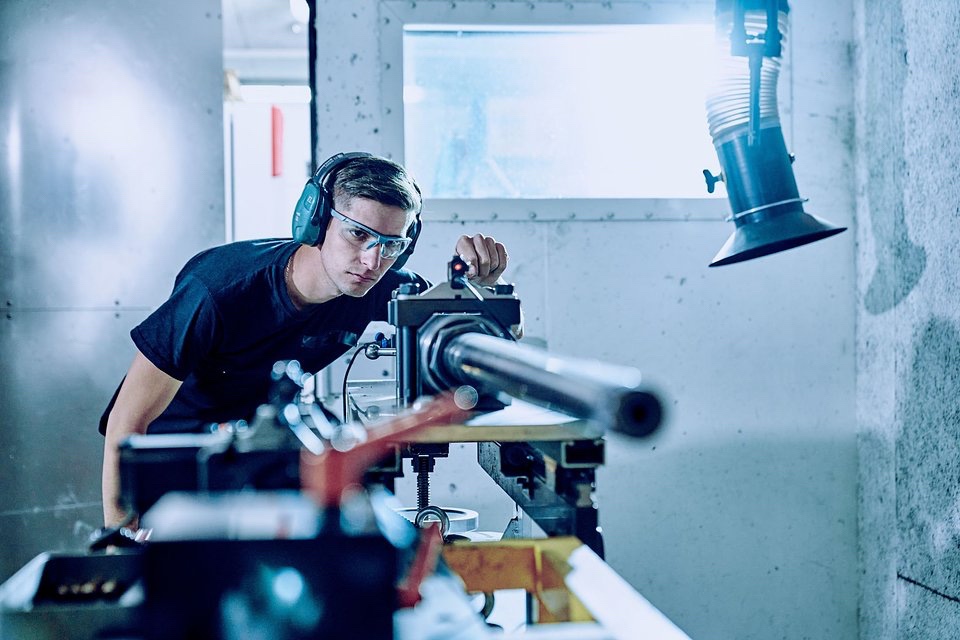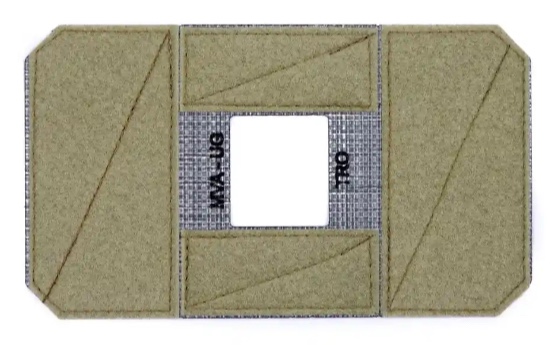Expanding the Market for Survivability Engineering and Composite SolutionsTysons Corner, Virginia Sept. 5, 2023 — The company that has provided the world’s military and law enforcement with protective armor for 25 years has changed its name and broadened its mission. “TenCate Advanced Armour becomes Integris Composites,” said CEO John W. Mercer.
For decades the firm has been a trusted partner in the design, engineering and manufacturing of survivability solutions for the world’s most demanding defense contractors, including Boeing, Airbus, General Dynamics and BAE Systems as well as major police agencies. Specifically, the company provides body armor plates for military and law enforcement personnel, as well as ballistic and blast protection for land vehicles, aircraft and naval vessels and antiballistic composites that also serve as structural housings for sensitive technologies such as optronics.

Presenting Integris: CEO John W. Mercer and Managing Director Helle Specht last week introducing employees at the Vissenbjerg, Denmark facility to the company’s new name Integris Composites. The new brand replaces TenCate Advanced Armour. For 25 years the business has provided the world’s military and law enforcement with protective armor designed, engineered and manufactured here as well as in France and the United States. “In 2020 we reestablished the company as a stand-alone business. Now, I am delighted to announce we have a stand-alone identity,” said Mercer, who was Executive Chairman of the Steering Committee until being named CEO in July. Permission is granted for publication. Credit: Holy Cow Media, Denmark
“In 2020 we reestablished the company as a stand-alone business. Now, I am delighted to announce we have a stand-alone identity,” said Mercer, who was Executive Chairman of the Steering Committee until being named CEO in July. “Our name has changed, but not our company, nor our dedication to customers and innovation, nor our commitment to creating cutting-edge composite solutions,” he added.
Integris maintains the ability to develop, test and manufacture armor solutions in its Danish, French and U.S. facilities. “We stand apart because of our ability to collaborate with and supply major contractors virtually anywhere in the world,” said Jonas Holck, group vice president for strategy.
Beyond Armor
“Our goal is to engineer and manufacture cutting-edge composite solutions, in high-performance applications or high-risk environments, that meet or exceed our customers’ expectations of quality, performance and value,” explained D. Andrew Bonham, president of Integris Composites, Inc., the U.S. company.

Stopping Power: Testing ballistic resistance at the shooting range in Primarette, France, home to one of the engineering and manufacturing facilities of Integris Composites. The others are in Denmark and the United States. The new Integris brand replaces TenCate Advanced Armour, which has provided the world’s military and law enforcement with protective armor for 25 years. “Integris stands apart because we design, engineer and produce the full range of ballistic armor and survivability solutions for personal protection; air, land and sea vehicles; and tactical technologies used by defense authorities and leading police agencies worldwide. Other firms support one or two of these needs. Integris supports all segments,” said CEO John W. Mercer. Permission is granted for publication. Credit: Holy Cow Media, Denmark
“Going forward, Integris is expanding its market into other sectors where lightweight, high-performance, innovative, fit-for-purpose composite solutions can be an advantage,” Bonham said.
Value Proposition
With its new name comes a recentering of the company’s mission. “Integris” evokes the reasons for longstanding customer loyalty, according to Mercer. “Reliability, integrity, innovation, design-engineering, research and development. All of that is packed into our new name.”
Integrity, Trust, Doing What You Say You Will Do
The name Integris was developed following a survey of employees that asked what characteristics most accurately define the business. “The answers were integrity, honesty, trust — delivering what you say you will deliver,” Holck said.
Integris provides composite solutions that enhance the value of the customer’s offering. “Customers know they have a partner for life. As a technical company, specialized in engineering, design, and manufacturing of high-quality composite solutions, we have a reputation for supporting long life-cycle programs — on time, on price, on quality — while creating new-generation composite solutions,” explained Mercer.

John W. Mercer: CEO of Integris Composites, the new name for TenCate Advanced Armour, the company that has provided the world’s military and law enforcement with protective armor for 25 years. Mercer served as Executive Chairman of the Steering Committee until being named CEO in July. “In 2020 we reestablished the company as a stand-alone business. Now, I am delighted to announce we have a stand-alone identity,” said Mercer. “Our name has changed, but not our company, nor our dedication to customers and innovation, nor our commitment to creating cutting-edge composite solutions.” Permission is granted for publication. Credit: Holy Cow Media, Denmark
“Integris stands apart because we design, engineer and produce the full range of ballistic armor and survivability solutions for personal protection; air, land and sea vehicles; and tactical technologies used by defense authorities and leading police agencies worldwide. Other firms support one or two of these needs. Integris supports all segments.”






























































































































